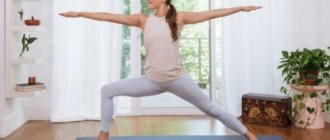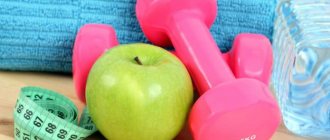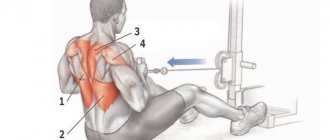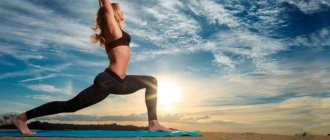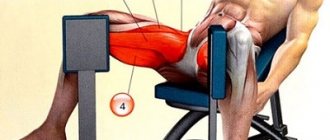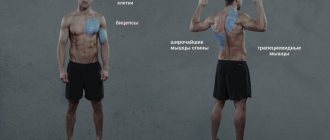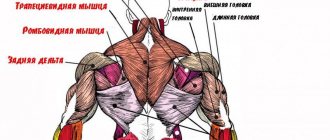In Indian culture, a lot of attention is paid to taking care of the body. Yoga is a whole science of the body that has no analogues in other cultures and strengthens a person both spiritually and physically. This is not just physical education, these are deeply thought-out exercises that allow you to achieve the ideal as quickly and efficiently as possible. Yoga for losing belly fat, strengthening muscles and relieving stress is now popular all over the world.
A separate advantage is that to practice yoga you do not need to go to the gym or buy equipment for your home. Take a mat that will soften the hardness of the floor a bit, choose a spot and get started.
Return to content
Is it possible to lose weight with yoga?
People who have been practicing yoga for a long time stand out from the crowd. They are slim, fit and especially fresh. It is enough to practice regularly for several weeks to start receiving compliments from others. Yoga makes all organs of the human body work better, triggering not only weight loss, but also improved well-being:
- Blood pressure and heart function are normalized;
- Sleep improves;
- Metabolism accelerates;
- Increases brain efficiency;
- Appetite decreases;
- The tendency to edema disappears;
- Muscles are strengthened;
- Energy and vigor appear.
Return to content
Contraindications
Hatha yoga requires concentration, stamina and strength. The loads here are not at all the same as those of athletes or wrestlers, but they are there, and not small. Therefore, such activities also have contraindications:
- Serious diseases of the nervous system;
- Period of exacerbation of any diseases of internal organs;
- Pneumonia;
- Tuberculosis;
- Heart diseases;
- Any stage of cancer;
- Damage to the spine or joints.
If you decide to start practicing yoga, be sure to consult your doctor and make sure you are not putting your health at risk.
Yoga helps to cope with many ailments, but it can only be practiced during periods when there are no exacerbations and the condition is stable.
Return to content
Some tips
Yoga is not ordinary gymnastics or dance. This is an eastern complex of spiritual and physical exercises that allows you to control the nervous system and the work of the mind, achieve a state of internal balance and absolute stillness. Each of the asanas carries a deep meaning and sometimes requires extreme strength to perform. Those who want to pump up beautiful abs with its help should first take several lessons from a master, work out in a group, which will give them the opportunity to understand the essence of the teaching and become familiar with the technical aspects.
Vata, pitta, kapha
In yoga, there are three types of constitution, and for each, the abdominal region has its own characteristics:
- For Vata, the norm is a flat, retracted stomach;
- for pitta - steel, pumped abs in cubes;
- for kapha there are no clear outlines.
Therefore, experts advise first finding out what type of constitution predominates in the body before you start pumping up your abs with yoga. Bypassing this issue, you may not achieve the desired result. With the help of several asanas, Pitta will see the first outlines of cubes within 3 weeks. Vata will rapidly lose weight, but problems may arise with pumping muscles. For kapha, working through it can become completely painful and lead to undesirable results.
Asanas, kriyas, cardio exercises
The complex should include both static asanas and dynamic kriyas. For example, agnisara kriya is aimed at improving the functioning of the abdominal organs and has a positive effect on the condition of the muscles.
Once you start doing yoga, you shouldn’t give up other types of exercise. First of all, from cardio. Additional assistance in classes will be provided by:
- morning jogging/treadmill;
- jumping rope;
- hula hoop spinning;
- cycling;
- morning exercises, etc.
As for power loads, this issue is resolved individually depending on the goals set. If a girl wants to have a flat stomach, yoga will be enough. If you need a steel press (both women and men can pursue such goals), do not forget about dumbbells, kettlebells, barbells and other anaerobic exercises. Part of the load will be taken on by asanas, but in order to form sculpted cubes, it is better not to discard weights and exercise equipment for safety reasons.
Lesson mode
- Ideally, yoga is best done in the morning.
- Classes are carried out on an empty stomach and no later than 3 hours before bedtime.
- Exercise every other day, leaving time for muscle recovery.
- Holding the pose is fixed for approximately 20 seconds. Next comes a 10-second relaxation and repeat.
- You can start with 5 repetitions, gradually increasing to 10.
- Follow the technique of performing asanas.
- If pain or discomfort occurs, interrupt the activity and reconsider the technique.
- Observe contraindications for yoga.
To achieve results as quickly as possible, do not forget about proper nutrition. To form beautiful abs you will need a lot of protein foods. Yoga itself promotes vegetarianism, but does not force people to switch to it. This is a voluntary activity for everyone.
Attention! There are a number of contraindications for practicing yoga: problems with the musculoskeletal system, CVD, hypertension, mental disorders, oncology, etc. However, they are all relative. Some asanas for the press can even be useful for diseases of the spine, for example. Therefore, it is better to consult a doctor first.
Rules for performing yoga for losing weight on the stomach and sides
Since yoga is a science and not just burning fat, it has many rules and nuances. To get the maximum result, you should adhere to them.
- Don't overload yourself. Get used to the exercises gradually. Start with a few minutes a day and gradually increase the load.
- Always exercise on a mat, not the floor.
- Set a routine and follow it strictly. Don't miss classes unless your health requires it.
- Exercise outdoors or in a well-ventilated area.
- Each exercise should be repeated 3-4 times during a workout.
- Start your session with a short warm-up to prepare your body.
- It is best to practice in the morning on an empty stomach. If this is not possible, let at least 2 hours pass after eating.
- Don't ask yourself whether the results of your training are visible in the first 4 weeks. It is there, but it grows gradually and this can only knock down your determination. After 4 weeks you won’t recognize yourself, but in the meantime, be patient.
- Try to eat healthy. More fresh vegetables and fruits rich in fiber, less sweets and smoked foods.
- Drink water. This is an inevitable rule of good health: at least 1.5 liters of water per day to prevent dehydration.
Yoga includes a huge number of asanas, each of which has its own purpose. Here are those that will help make your figure slim:
- Dog pose;
- Half Moon Pose;
- Rest pose;
- Camel Pose;
- Boat Pose;
- Half a boat;
- Cobra pose;
- Warrior pose;
- Tilt towards the feet
These are the yoga poses for losing weight on the stomach and sides, and we will dwell on them in more detail.
Return to content
Which yoga is best for weight loss?
The principle of losing weight with yoga exercises is based on the isometric effect on the muscles. Unlike power loads, muscle tissue is tense, but its length does not change. There are many practices that promote weight loss. You can choose any direction:
- Hatha. Classic variations of exercises based on a leisurely pace and calm performance of asanas. The load is comparable to strength training. There are 4 exercises in the basic complex. Learning asanas on your own from photos or videos from the Internet can be dangerous, so seek professional help from a trainer.
- Iyengar . For comfort and high efficiency of this system, various devices are used: rollers, belts, supports. All loads are static; when developing the complex, the individual characteristics of the student are taken into account.
- Ashtanga. During exercises from this system, it is important to achieve synchronization of breathing with movements. The result is internal heat and profuse sweating of the body. Increased oxygen supply ensures the accumulation of vital energy. The practitioner gains strength and lightness.
- Kundalini. The system includes meditations combined with movements. The classes have no contraindications; after regular training, the body will gain flexibility, mobility, and endurance. Additional benefits are increased resistance to stress, improved body function, increased awareness and self-discipline.
Camel Pose
Ushtrasana is a pose that helps strengthen the torso muscles. With regular practice, it makes the spine flexible and strengthens the respiratory organs. It is often recommended for people prone to colds or with weak lungs.
Lay down a small rug. Sit on your knees, hands on your hips. From this position, lift your pelvis while continuing to lean on your knees. Arch your back, stretch your head and hands toward your heels.
If you have just started doing yoga and find it difficult, you can place your hands behind your back one at a time. When executed perfectly, they move in parallel.
Return to content
Boat pose
Paripurna Navasana perfectly loads the abdominal and leg muscles.
Sit on the mat with your legs straight in front of you. Lean your torso back while raising your legs. Balance with your heels and head at the same height. Your arms should be extended forward.
Beginners can make the task easier by raising their legs slightly bent. However, you need to strive to improve stretching and perform the asana fully.
Pros perform the exercise by spreading their arms to the sides, increasing the load on the abdominal muscles.
Return to content
Half a boat
Ardha Navasana is a variation of the previous asana.
When performing it, you also tilt your body from a sitting position and raise your legs, balancing on your buttocks. But in this asana, the hands should be behind the head, which slightly changes the load. The legs are raised approximately forty degrees relative to the floor.
Return to content
Utanpadasana (Leg Raising Pose)
This pose helps to get rid of the problem area of the lower abdomen and also strengthens the thighs. This pose is one of the most effective and efficient, thanks to it flabby muscles and accumulated deposits around the waist and hips gain elasticity and strength.
How to do
Lie on the mat with your back on the floor, legs extended. The heels touch each other. Keep your arms on either side of your body, with your palms facing the ground. Take a deep breath. Do not move your hands from their original position. Breathe normally. Stretch on the floor to the maximum possible level without arching your lower back. Inhaling deeply, lift your legs off the floor and keep them at a 45-degree angle to the floor. Hold the pose for 15 to 30 seconds, breathing normally. Work slowly to maintain the posture for more than 60 seconds. Exhale deeply and lift your legs so that they are at a 90-degree angle to the floor. Breathe and hold the pose for about 30 seconds. Inhaling deeply, gradually bring your legs back to the starting position - lying on your back. To begin, repeat this asana 10 times, gradually increasing to 30. Rest for 15 seconds after each repetition.
Benefit
Treats the stomach and related ailments, such as high acidity and constipation. Treats back pain. Improves the functioning of the reproductive organs. Improves blood circulation.
Contraindications
When recovering from spinal injuries, this pose should be avoided.
Dog pose
Adho Mukha Svanasana helps strengthen the muscles of the legs and abs.
Get on all fours with your back straight. As you exhale, straighten your legs, resting on your palms and feet.
Beginners can stop here. Pros perform back bends.
Then you should exit the pose correctly. Place your feet close to your hands and straighten up, inhaling and raising your arms up. Lower them and exhale.
To lose weight, you can drink apple or wine vinegar, which have a burning effect on fats in the human body -.
You can arrange a fasting day on cottage cheese for weight loss. This diet also helps you lose weight. Most importantly, it does not exhaust the body by starvation.
Here we describe a diet option for losing weight by 10 kg. Among them is the buckwheat diet.
Return to content
Pavamuktasana (Wind Release Pose)
This asana helps in combating various gastric problems including indigestion and constipation.
How to do
Lie in a supine position (face up) with your arms next to your body, legs extended straight, and heels touching each other. Bend your knees. Take a deep breath, and as you exhale, gradually bring your bent knees to your chest, pressing your hips into your stomach. Keep your knees together while pressing your hands onto your thighs. Inhale again, and as you exhale, lift your head, this will allow your chin to touch your knees.
Hold the position for 60 to 90 seconds, while breathing deeply. Exhale slowly and release your knees, allowing your head to rest on the floor. Bring your arms to either side of your body, palms on the ground.
Relax in Shavasana. Repeat the asana 7 to 10 times, with a 15-second interval between repetitions.
Benefits
Strengthens the back and abdominal muscles. Helps in digestion and release of gas. Tones the muscles of the legs and arms.
Contraindications
Pregnant women, people suffering from spinal problems, people with high blood pressure and heart problems should refrain from performing this pose.
Cobra pose
Bhujangasana works on the stabilizing muscles of the torso and abs, affects posture and waist. It makes the spine more flexible and has a beneficial effect on the organs of the digestive system.
Lie face down on the mat, place your hands on your palms at chest level. Elbows pressed to the body.
Smoothly straighten your arms, arching your back and without lifting your hips from the floor.
In this position, the stomach should be pulled in and the shoulders should be apart.
Slowly return to the first position, tensing your buttocks and legs.
Return to content
Tadasana (Mountain Pose)
Tadasna is an ideal warm-up pose. Improves blood circulation, ensuring the body is ready for practice.
How to do
Stand tall with your legs straight, heels slightly apart and your big toes remaining in contact with each other. Keep your spine straight, arms on both sides with palms closer to your body. Extend your arms forward and bring your palms close to each other.
Inhaling deeply, stretch your spine. Raise your folded arms above your head and stretch as far as you can. Try standing up on your tiptoes, looking up at the ceiling. If you can't stand on your toes, lower your heels to the floor and lift your face towards the ceiling. Breathe normally and hold the pose for 20 to 30 seconds.
Inhale deeply, and as you exhale, slowly relax and lower your feet to the floor.
Repeat the asana 10 times, gradually increasing the time spent in the pose. Rest 10 seconds before attempting the next rep.
Benefit
Improves posture, the shape of the abdomen and buttocks. Strengthens hips, knees and ankles.
Relieves sciatica (pain that affects the back, hips and outer legs).
Contraindications
People suffering from low blood pressure, insomnia, headaches are not recommended to perform this pose.
Warrior Pose
Virabhadrasana specializes in the muscles of the back and waist, and also strengthens the legs. There are two varieties of this asana.
- Virabhadrasana 1. Stand straight on the mat with your feet wide apart. Place your palms together above your head. Then bend one knee while keeping your weight on that leg. Turn your body in the direction of travel. Stay in this position for a while, then straighten up.
- Virabhadrasana 2. Stand on the mat with your feet wide apart. One leg is straight, the other is bent at a right angle. Turn your head in the direction of the tilt, spread your arms to the sides, parallel to the ground. Stand in this position for a minute, pulling in your stomach and straightening your back.
In both types, this asana must be performed twice - bending the legs in turn.
Pros perform Virabhadrasana, leaning on one leg, raising the other to the chest, then moving the leg back and bending the torso forward. Your arms can be extended to the sides, or pressed against your body. This makes the muscles work more intensely and improves balance.
Return to content
Set of exercises
Bend to the side (sitting)
Place your feet together and take Baddha Konasana. Place your left hand on the floor at a distance of 30 cm from your left hip. While inhaling, raise your right arm up and lean to the left. As you exhale, move your left shoulder away from your right ear. Inhale again and stretch the right side of your torso. Exhale. The neck is relaxed. Try to extend your right arm as much as possible until your fingers are 30 cm from the floor. You will need to stay in this position for 4 breathing cycles. Return to the starting position. Repeat the same movement in the other direction. Hold in each position for 4 breathing cycles.
Crunches
Lie on the floor with your knees bent. Place your palms in a lock at the back of your head. Breathe in. Hold your breath and lift your tailbone. As you exhale, try to reach your right knee with your elbows and at the same time straighten your left leg. At the end of the movement, pull your stomach in. Return to the starting position. While inhaling, hold your breath and pull in your tailbone. Exhale, now try to reach your elbows to your left knee, and straighten your right leg. If you are a beginner, start with 5 repetitions in each direction.
Strengthening the press
Take a mat, roll it into a tube, and place the roller you made between your thighs. Place your hands at the back of your head and raise your legs. While inhaling, press your lower back into the floor, and try to squeeze the roller with your feet. As you exhale, lift your shoulders and head off the ground, squeeze the mat with your feet, and draw in your stomach. After this, inhale again, lower your pelvis and head. For beginners, you need to do 3-5 approaches.
Crunch with legs apart
Lying on the floor, cup your palms at the back of your head. As you inhale, lift your legs vertically up, and as you exhale, spread them apart as wide as possible. Inhale again and at the same time lift your shoulders and head from the floor. As you exhale, draw in your stomach. Inhale, keep your head raised. For beginners, performing 3-5 repetitions is optimal. After finishing the exercise, bring your legs together and lower them to the floor.
Twisting in frog pose
Place your hands at the back of your head. As you inhale, raise your legs so that your shins are parallel to the floor. As you exhale, spread your legs so that they resemble a frog pose - your legs are bent at the knees at an angle of 90°, your feet should be in constant tension. Inhale, lift your head and shoulders. Exhale and draw in your stomach. During the next inhalation, lower your pelvis, keep your head raised all the time, repeat the entire cycle of movements. Beginners are recommended to do no more than 3-5 repetitions.
twisted root
Lie on the floor and fold your legs into the Garudasana position (Eagle pose), to do this, lift your legs vertically up, hooking your left foot onto your right shin. Bend your knees, with your thighs facing your lower abdomen. Clasp your hands at the back of your head, inhale, lift your head and shoulders off the floor. Exhale while drawing in your tailbone, tense and squeeze your thighs, and try to point your sit bones towards each other. Pull your stomach in while raising your knees as much as possible. Exhale again and lower your pelvis, keeping your head raised all the time. Repeat this cycle 3-4 times.
Bridge building asana
Lie down on the floor. Bend your knees, place them hip-width apart so that your heels are level with your knees. As you exhale, point your tailbone up, lift your ribs and pelvis. Inhale, point your rib cage bone towards your chin. Exhale again and push the floor with your feet, raising your tailbone even higher. The neck is relaxed, and the head too. If you are a beginner, stay in this position for 5-8 breathing cycles.
Dolphin
To begin, kneel down and press your forearms to the floor. As you exhale, move your shoulder blades toward your armpits, thereby engaging the muscles of your back and chest. Inhale while bending your toes, and as you exhale, straighten your legs. Inhale and press your forearms into the floor, lengthening your spine toward your pelvis. As you exhale, stretch your heels toward the floor. The neck and head are relaxed. Hold this asana for 5-8 breathing cycles.
Rest pose
Savasana is the ideal asana to end your workout. Lie on your back on the mat and thoughtfully relax every muscle in your body. Lie like this for a few minutes.
This set of exercises should be performed every day, preferably twice a day. After the first visits, it may seem that this is not reflected in anything. But after a few weeks of regular training, you will begin to notice how your body is transformed. Pleasant music and slow flowing asanas for weight loss will allow you to get your figure into the desired shape without stress.
Return to content
Dhanurasana (Bow Pose)
This pose is great for toning the stomach. Along with a good stretch on the abdomen, back, hips, arms, and also chest, this helps in improving posture.
How to do
Lie face down on the mat with your feet together, arms on either side of your body and palms facing the floor. Exhale deeply and bend your knees upward. Raise your head and bend back. Move your arms back and try to grab your ankles with your hands.
Support your body weight with your stomach. Inhaling deeply, try to raise your knees higher.
Hold the pose for 15 to 30 seconds, working gradually from 60 to 90 seconds. Breathe normally, maintain your posture. Exhale and slowly relax, stretching your body. Repeat this asana 10 times, gradually increasing to 30. Rest for 15 seconds after each repetition.
Benefit
Improves posture. Stretches the back muscles and makes them strong. Stimulates the neck and abdomen.
Contraindications
People suffering from high blood pressure, hernia, lower back pain or neck injury should refrain from performing this pose. Pregnant women or women during their menstrual cycle should not perform this pose.
Yoga exercises and poses for weight loss
Yoga does not burn fat like running. It acts by accelerating the metabolism, slowly and delicately. You need to perform asanas correctly and practice breathing exercises, which are also given great attention in Indian culture.
There is a special word for breathing - pranayama. The main thing in the art of breathing correctly is to do it deeply and use all the capacity of the lungs. Here's how to learn it:
- Take a comfortable position on the mat. You can lie on your back or sit with your back straight.
- Pull your stomach in and tighten your abdominal muscles.
- Push the air out of the bottom of your lungs using your abdominal muscles and diaphragm.
- Relax your stomach.
- Slowly inhale as much air as possible. First, the stomach inflates, then the chest expands, then a little more air is placed under the collarbones.
- Hold your breath.
- Exhale, emptying your lungs first in the area of the collarbones, then the ribs, then the abdomen. Exhale all the air to the maximum.
- Hold your breath.
- Inhale again according to the described pattern.
Pranayama is an important component of yoga for the waist and abdomen. After all, all these muscles must get used to participating in the breathing process and work constantly.
Do these exercises as often as possible. When you perform asanas or go about your business, always try to breathe this way. At first it is strange, then you get used to it and it becomes the most comfortable way of breathing. Because it is most beneficial for the body to breathe this way.
Having learned to breathe, we move on to asanas that will help you become slimmer. Don't forget about the pranayama skills you just learned.
Return to content
Agnisara Kriya
Essence: internal cleansing technique, setting the organs and muscles of the abdominal cavity in motion.
Benefit:
- removes poisons and toxins from the body;
- accelerates blood flow;
- improves digestion;
- cleanses the gastrointestinal tract;
- accelerates metabolism;
- starts the process of fat burning in the abdominal area;
- normalizes the functioning of the liver, kidneys, spleen;
- regulates pH balance.
It works specifically with the abdominal muscles, which is why it is considered one of the best yoga exercises for the abs. Performed exclusively in the morning. The rest of the day it is not effective.
Technique:
- Stand up straight. Place your arms along your body. Place your feet shoulder width apart.
- Bend your knees. Place your palms on your hips. Lean forward. This is the starting position.
- Relax your abs. Take a deep breath and inflate your stomach as much as possible. Hold the breath.
- Bend over as low as possible so that your stomach is between your thighs.
- Exhale sharply. Hold the breath. Pull your stomach in as much as possible.
- Return to starting position.
- Continuing to hold your breath, alternately draw in and protrude your stomach as much as possible.
- When you feel that you no longer have the strength to hold your breath, relax and take a slow and deep breath through your nose.
- Relax. Repeat.
Those who have been practicing yoga for more than one year, while holding their breath, perform 40 abdominal movements (20 retractions and 20 protrusions), and the number of repetitions of the exercise reaches 100. However, for beginners this will be overwhelming, so in the first classes you need to do as much as your physical strength allows. Preparation. But over time, the load should constantly increase.
Note. Techniques for performing asanas suggest several variations. Therefore, the versions proposed here may differ from those described in other sources. For example, agnisara kriya is performed standing or sitting, with or without holding the breath. The main thing is to grasp the essence of each exercise and understand how they work the abs.
Vasisthasana
Lie on your side with your torso and legs extended in one line. Place your lower arm at your shoulder and straighten it, raising your body straight with emphasis on one foot. The hips also come off. The top arm should be extended upward.
Freeze in this position, then lower yourself onto the mat and repeat on the other side.
Pros can make the asana more difficult by lifting the top leg while holding the foot with the hand.
This asana intensively strengthens stabilizer muscles and has a beneficial effect on the functioning of internal organs.
Return to content
Ardha Matsyendrasana
Other names: King of Pisces pose, twisted spine asana, Matsyendra half pose.
The essence: has a therapeutic effect, improving digestion and alleviating diseases of the spine, works with the abs.
Benefit:
- improves blood circulation in the spine;
- resolves congestion in the back (useful for physical inactivity);
- has a positive effect on the musculoskeletal system;
- strengthens the spine;
- performs massage of organs located in the abdominal area;
- recommended for asthma, obesity, dyspepsia, displaced intervertebral discs, rheumatism.
Technique:
- Sit on the floor. Keep straightened legs together. This is the starting position.
- Bend your left knee and fix it.
- Bend your right leg and place it underneath your left leg. Place your heel near your buttock.
- Cross the left leg over the right, placing the foot on the outside of the thigh.
- Bend your right arm and grab your left leg.
- Place your left hand behind your back and focus on it.
- Turn your body and head to the left to the maximum extent.
- Breathing should be smooth. Detain him.
- Return to starting position.
For Ardha Matsyendrasana to work as effectively as possible, it is recommended to perform the asana daily and at the same time. This makes it different from other yoga poses.
Bhujangasana
The starting position is the same as in Shalabhasana, but place your hands on the floor. As you inhale, straighten your arms, lifting your body. At the same time, the hips lie, the back bends.
This asana develops flexibility of the spine, strengthens the muscles of the arms, abs and back.
Perform asanas in a complex manner, without haste, to pleasant music. Do a couple of sets every day and don't allow yourself to take breaks. Yoga for the abs and waist is one of the most effective ways to achieve your desired goal. But only subject to discipline and regular exercise.
Return to content
Exercise technique
In order to increase the effectiveness of the exercises performed, it is recommended to follow some rules. So, just a few weeks after starting classes, you will see the first results, which will be a good incentive to increase your loads.
- Warm up. Place your feet shoulder-width apart and stretch to the right and left sides, thereby warming up the lateral muscles of the core. Bend forward, left and right several times, touching your fingertips to the floor, which will stretch the inner thigh muscles, calves, and transverse abdominal muscles. Finish your warm-up with slow twists and head circles.
- Breath. During the exercises, it is recommended to adhere to one breathing cycle “inhale-exhale”. The exercise is performed while inhaling, while in each position, hold your breath for several counts, and at the same time, try to tense your abdominal muscles as much as possible. As you exhale, slowly come out of the indicated pose and proceed to the next exercise.
- Cyclicality. It is recommended to perform each exercise 3-5 times for maximum development of a specific muscle group. After completing the entire set of exercises, it is important to repeat the cycle in order to consolidate the result. So, you will spend no more than 15 minutes on one cycle, which must be repeated daily.
Yoga instructors recommend combining exercises for a flat stomach with cardio training - walking, running or aerobics. If yoga exercises are aimed at training muscles and tightening the skin, then cardio training will only help speed up the process of burning fat from the abdominal area. To avoid overload, it is advisable to alternate workouts. For example, today you do yoga, and tomorrow you go for a run at the local stadium.
